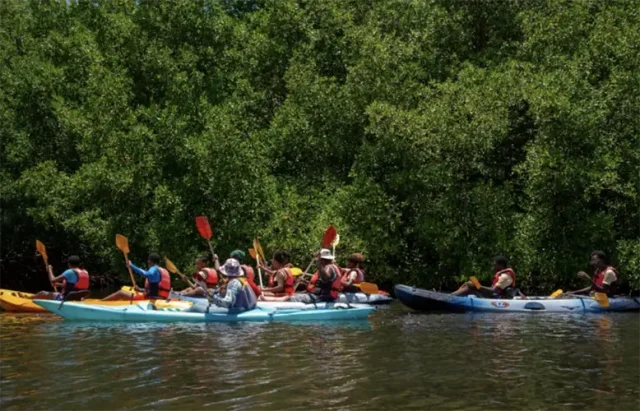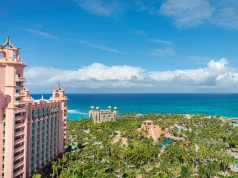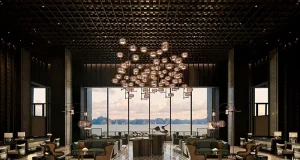
Mangrove forests and swamps protect the seashore on many Caribbean islands, including the verdant Martinique, where extensive groves are accessible by foot, canoe, and kayak. These ancient plants are one of the few species that can live in salt water. By doing so they provide shelter among their stilt-like roots for juvenile fish, crustaceans, iguanas, birds and multitudes of colourful insects. They also act as a primary carbon trap to help with climate change and as a barrier to erosion in the case of storms and surges.
Canoe and kayak operators in Martinique make discovering the mysteries of the mangroves for yourself easy, offering everything from fully guided experiences to self-exploration. While sea kayaking requires some knowledge, gliding through the waters of a coastal mangrove forest is an other-worldly experience that anyone can enjoy.
Peering down into the crystal-clear water, paddlers can spot multitudes of both juvenile fish and species that permanently inhabit the intertidal zone. Crabs climb up out of the water to watch visitors glide silently by. Iguanas stare unblinkingly at those who remain the quietest. Shellfish cling to the roots and provide a possible feast for harvest. Birds, especially those who love to fish, such as herons and pelicans, can often be spotted, with occasional glimpses of rare migrating species.
Les Anses-d’Arlet, Pointe Borgnèse, the Pilote River Canal and the Diamant Backwater all offer different experiences. Génipa Bay is home to the largest mangrove in Martinique, covering nearly 1200 hectares, between Ducos, Rivière-Salée and les Trois-Ilets. Céron Islet is only accessible by sea and a guided tour is recommended, as well as some experience with the craft on open water. Whichever package the visitor picks, they are assured of a rare experience. For more information on the mangroves of Martinique, visit https://www.martinique.org/en/things-to-do/water-sports-and-activities/kayak-aventure-mangrove





